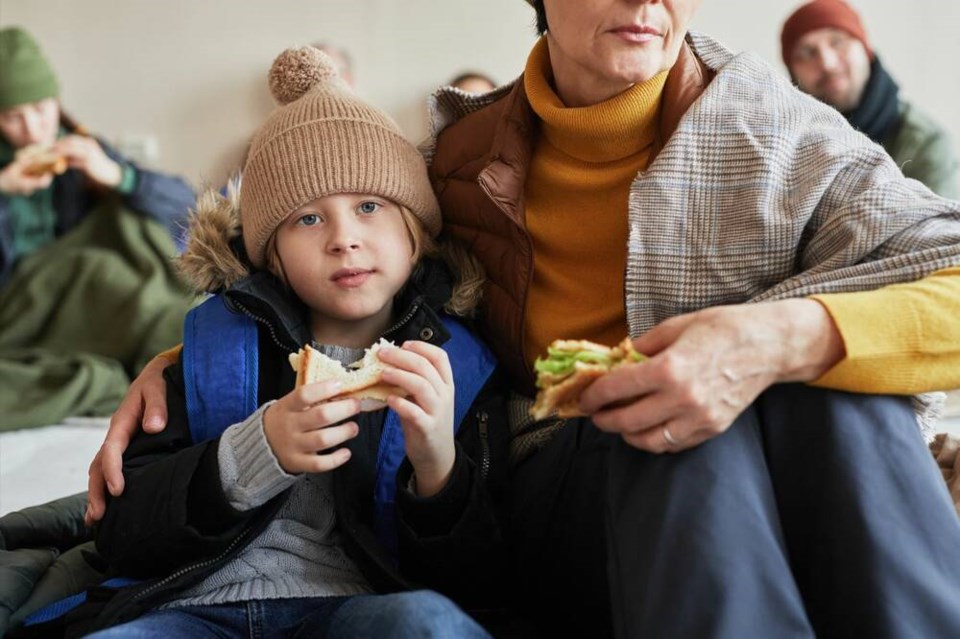A “staggering” number of women and children have become homeless since the beginning of the COVID-19 pandemic.
Shawn Bayes, executive director of the Elizabeth Fry Society, said the society currently has 113 shelter beds for women and children in its facilities – and that’s not nearly enough to meet the need.
“I would say we turn away probably 40 per cent of the calls we get,” she said.
Bayes said the restaurant and service industries were particularly affected during COVID, and the increase in online shopping and the reduction in operating hours continue to impact employment in those industries.
“Those are all industries in which women work greatly, and so that’s impacted them,” she said. “Their income has diminished. Housing is so expensive here that they can’t afford housing. And so they end up being pushed out.”
Prior to the pandemic, the Elizabeth Fry Society ran a couple of women-only (no children) shelters.
“And because, since COVID, the number of children who are homeless has been growing just staggeringly, we’ve opened all our shelters to taking women with children,” Bayes said. “That has meant, unfortunately, that we now turn away a lot of single women, and they have to go into coed shelters.”
That’s less than ideal, Bayes said.
“I cannot imagine being a woman, three or four of you, living with 40 guys. And that’s often why women don’t go into coed shelters,” she said. “We have tried to prioritize the most vulnerable. And, obviously, the rights of the child are paramount.”
Bayes said there are “very few” funded shelters that take women with their children – and most of them are run by EFry.
“That’s why EFry has really ensured that we have shelter beds for children, because there are very few shelter beds for children,” she said. “There are coed shelters. There are men’s shelters. There are coed shelters where women can go, but they can’t take their children with them to those shelters for obvious safety reasons.”
In addition to mothers with children, older women are often in need of shelter beds.
“You go to our shelter and you see women sitting there – and they’re reading their books, or they’re doing their crocheting, or maybe they’re working on a laptop,” Bayes said. “It’s not the population I think that people think are in shelters.”
Some of the women who require shelter beds may have lost pension funds upon the death of spouse. Others were evicted when they were unable to pay their bills after getting sick or being hospitalized. Some women lose the apartments they’ve lived in for a long time and find it impossible to afford today’s market rental rates.
“We have a lot of elderly women, they can’t afford the rent. They’re being pushed out. Young, single moms with kids; again, pushed out. Young families, pushed down,” she said. “So, you know, that’s who we see, who we’re serving and see. But that’s the impact of what’s happening.”
With no home, Bayes said some moms and children live in vehicles.
“I think people don’t always understand when they see those cars all crammed up with stuff about what that means. Those are people living in them, and they’re often women with kids,” she said. “Because, you know, you can have an old car and insure it for about $75 a month. And then you can control it, right? You can move. Your children are safe. You can lock the doors.”
An EFry drop-in centre provides a place where those women could do their laundry, where their kids could do their homework, where they could all get something to eat.
“We became their living room,” she said.
Bayes said some women make the heartbreaking decision to put their children into government care, in an effort to ensure they have stability, food and a roof over their head.
“Women often choose to put their children in care – to save them from being homeless,” she explained. “Women are choosing to put their children in care to save them because they’re just like: ‘What is there left?’ They don’t have resources to draw upon. They’ve couch surfed everywhere. They’ve run out of options. They’ve burnt out all of the availability of options for them and they don’t have anything else to do. And, so, that’s why we’ve taken on a lot of the issues we have – to just try and understand structurally where those barriers are.”

